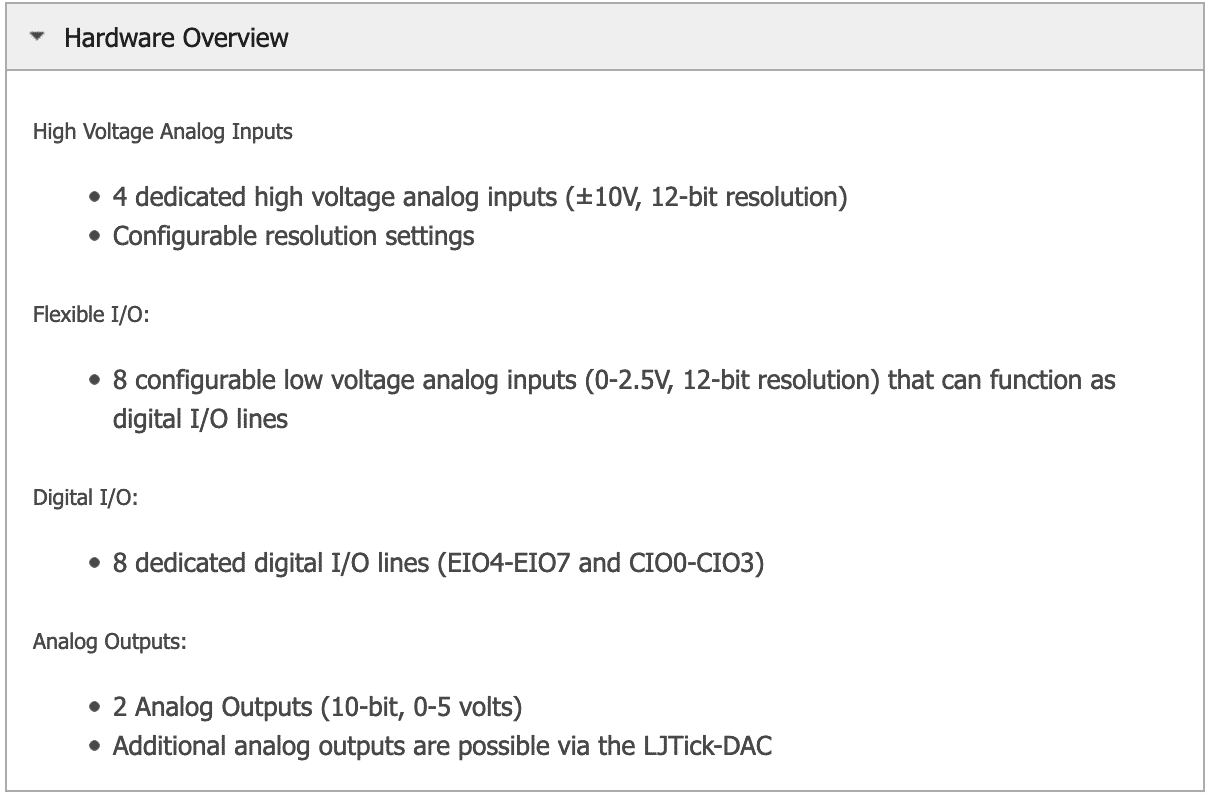Data Acquisition and Control guide series
04
LabJack T4 specifications and documentation
In this lesson, I take a closer look at the LabJack T4. This is the device that I'm using throughout this course and guide.
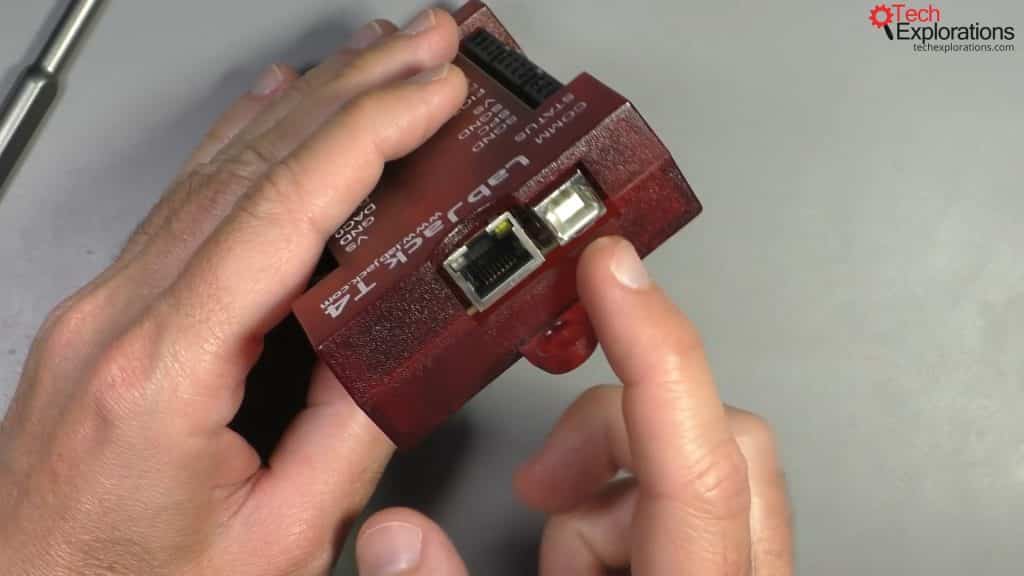
Hi, thanks for stopping by! Just letting you know that we are currently working on this page. You may notice incorrect links and lots of typos. We expect to buff and polish within a few days.
Let's take a closer look at the LabJack T4. I've been using one for more then a year, and had plenty of time to become familiar with it.
OEM or "regular"?
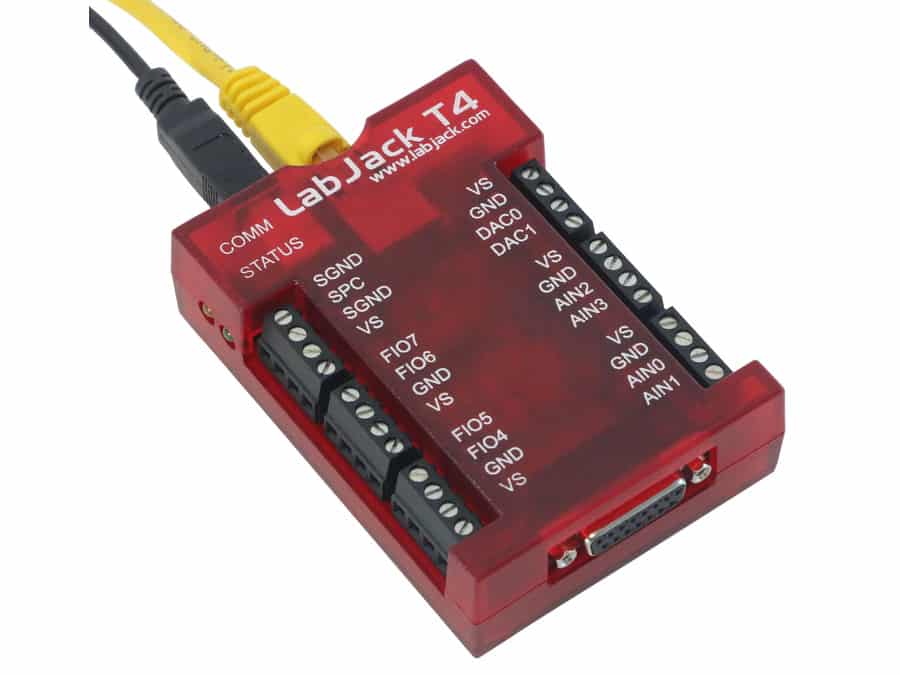
LabJack T4
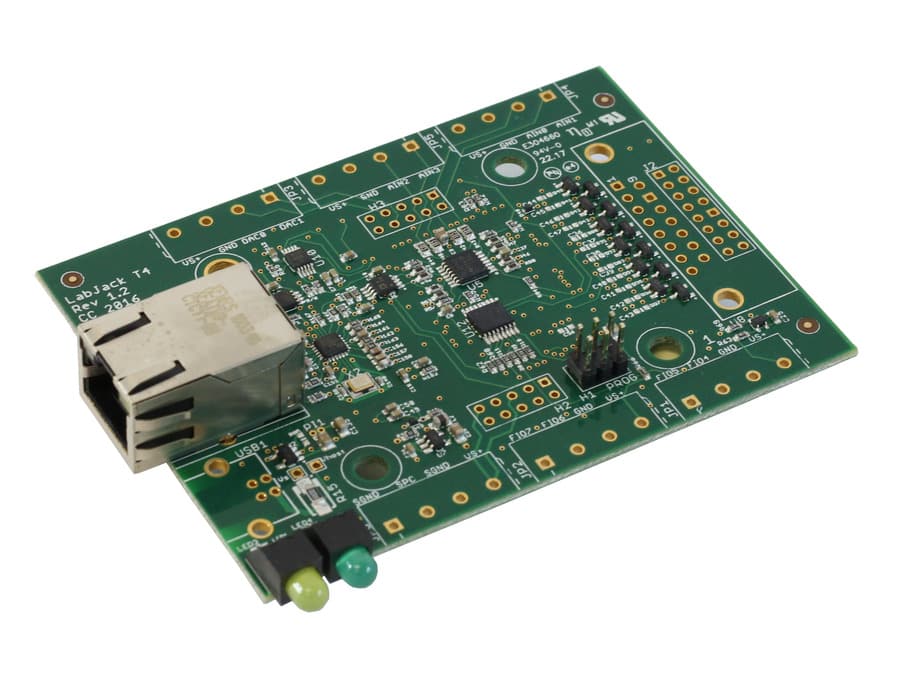
LabJack T4 OEM
LabJack offers its devices in a regular retail version, with the distinctive red plastic enclosure, or as an OEM, bare-bones version.
The OEM version is just the device main logic board. No enclosure, screw terminals or connectors. The OEM version is designed to be integrated into custom products by the customer, while the regular retail version is ready to use.
LabJack T4 specifications
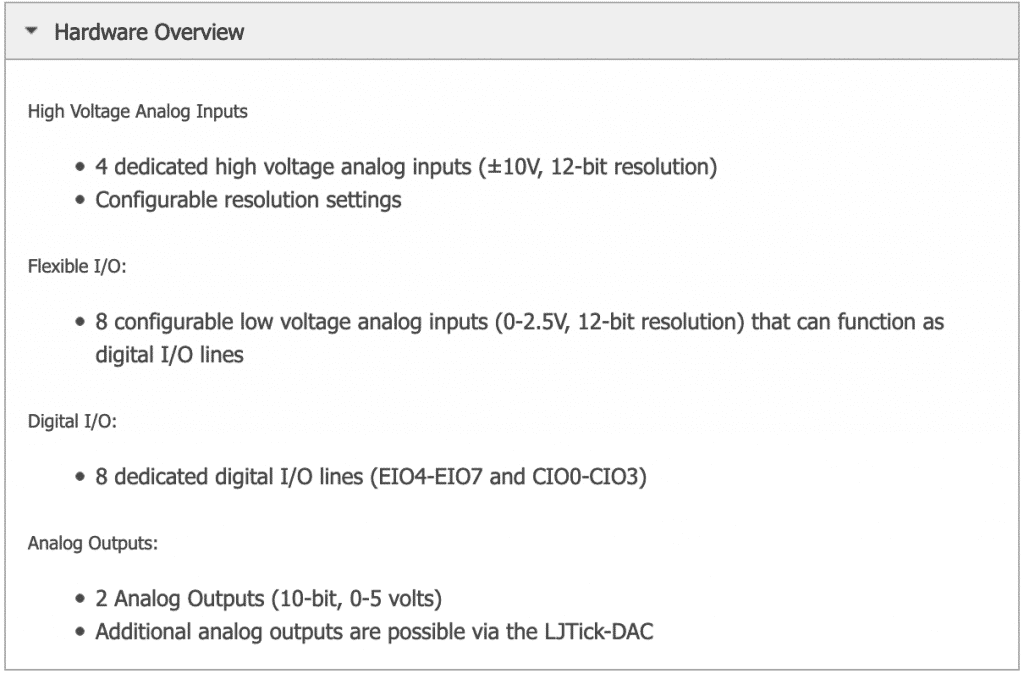
Screenshot taken from the LabJack website.
You can see a summary of the capabilities of the LabJack T4 in the screenshot above.
LabJack T4 Analog Inputs
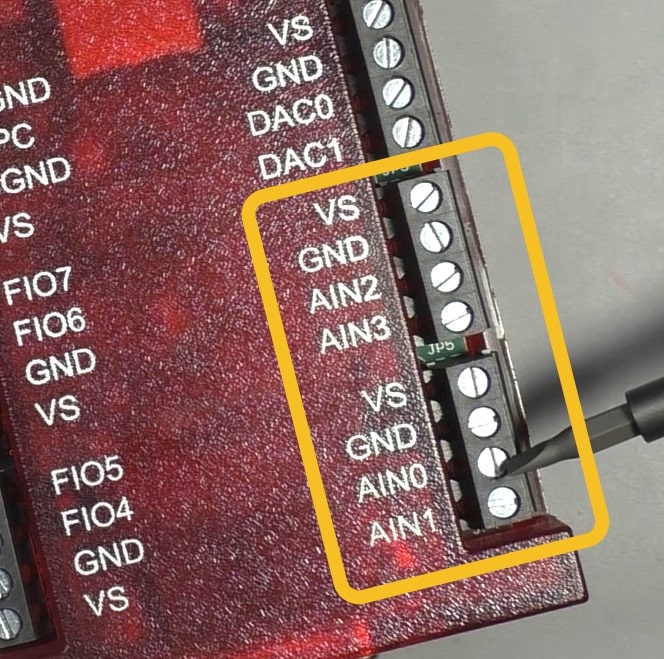
LabJack T4 High-voltage analog inputs.
The LabJack T4 has four dedicated high voltage analog inputs. You can see those ports in the photograph above.
By "high voltage", I mean that you can plug in sources that you want to measure that range from minus 10 volts to plus 10 volts (-10V to +10V).
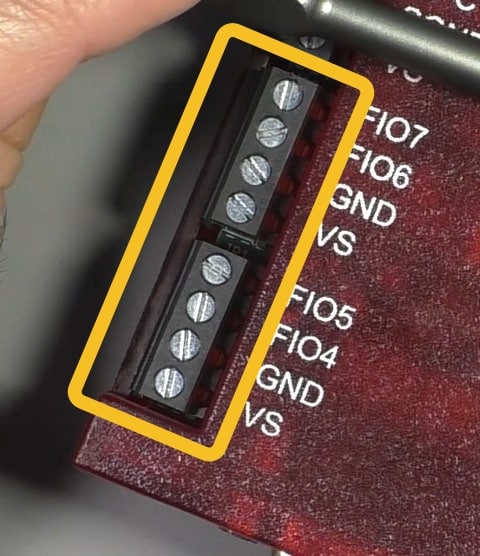
LabJack T4 Low-voltage analog inputs (as FIOs).
On the other side of the LabJack T4, you will find four FIOs (Flexible Input/Output ports) which combine digital input/outputs with analog input/outputs. The FIO ports have multiple functions, including as low-voltage analog inputs.Their input voltage tolerance is -2.5V to +2.5V.
Both the high voltage analog inputs and the low voltage analog inputs have a resolution of 12 bits.
LabJack T4 Flexible Input/Outputs
The flexible inputs/outputs (FIO) have a multiple functionalities:
1. Digital inputs.
2. Digital outputs.
3. Extended functionalities such as the ability to create a PWM signal, measure the frequency of a periodic wave, or implement a counter.
When used as digital input/outputs, in addition to be able to do things such as control binary devices such as LEDs and relays, they can also be configured with various types of extended functionalities. In this course, I've dedicated several lectures to explore these extended functionalities.
Think of the FIOs as multipurpose multipurpose ports.
LabJack T4 Digital to Analog Converters
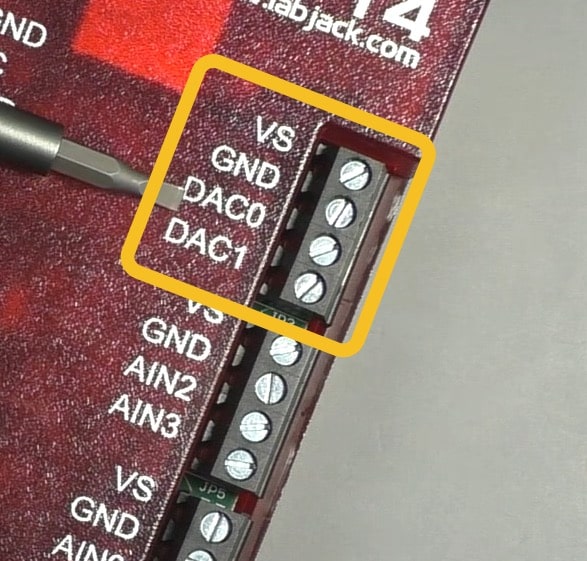
LabJack Digital to Analog Converters.
There are also two dedicated digital to analog converters (DAC) on the right side of the device that give you 10 bit resolution and 5 volts amplitude.
You can use these DACs to "write" arbitrary voltage.
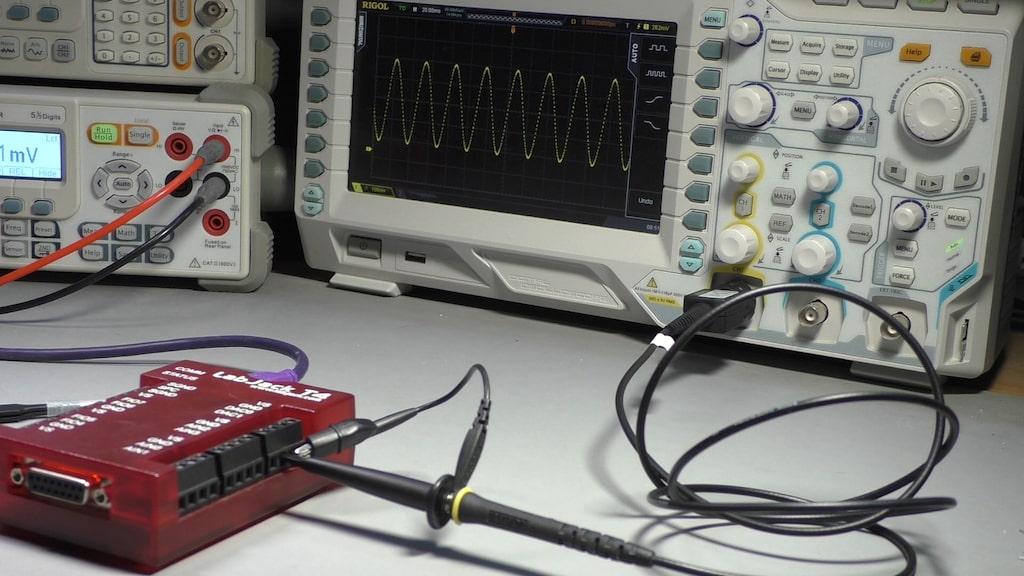
A Lua script running on the LabJack T4 creates a sine waveform display on the oscilloscope.
When you combine it with on-board Lua scripting you can create arbitrary waveforms. I've got examples of how that works and how you can do that in dedicated lectures in this course.
LabJack T4 DB15 connector
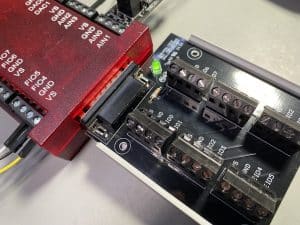
The LabJack port expander
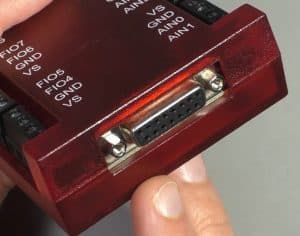
The DB15 connector on the LabJack T4
The LabJack T4 device contains a DB15 connector that offers an additional array of ports. The connector is accessible via an adapter that contains screw terminals for each port, just like in the main LabJack device.
The DB15 connector offers a simple method to extend the number of peripherals that you can attach to the LabJack.
LabJack T4 communications
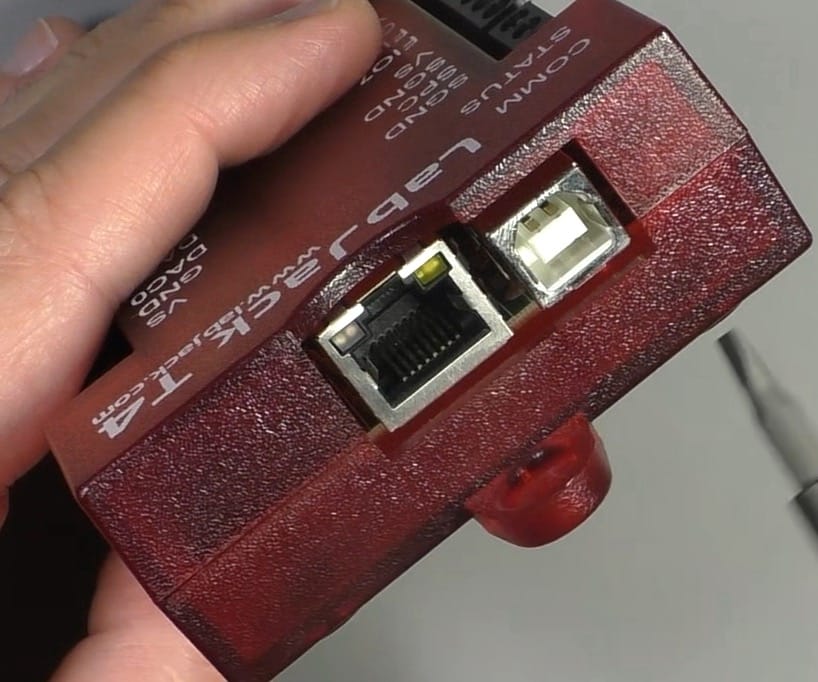
LabJack T4 offers USB and Ethernet communications.
On the front side of the LabJack device, you will find the two communications options: Ethernet and USB.
You can use both ports to both communicate with the device and offer the power to the device.
The Ethernet port does not support PoE, but you can use an external PoE splitter so that you can power your LabJack from a compatible Ethernet switch. I don't have this capability in my network, so I usually use Ethernet for communications, and a USB power supply for power.
LabJack T4 documentation
The LabJack T-series datasheet is the first place to look for anything related to the T4 or T7 devices. I make frequent reference to this document throughout this course.
"Data Acquisition and Control" series
Learn Data Acquisition and Control with LabJack
With this video course, you will learn how to use the LabJack device to perform data acquisition and control (DaQ) operations.
LabJack was designed to be robust and reliable, to work autonomously in harsh environments for a long period of time, and to have a lot of input/output ports able to connect to a huge range of sensors and actuators.
Jump to another article
We publish fresh content each week. Read how-to's on Arduino, ESP32, KiCad, Node-RED, drones and more. Listen to interviews. Learn about new tech with our comprehensive reviews. Get discount offers for our courses and books. Interact with our community. One email per week, no spam; unsubscribe at any time

